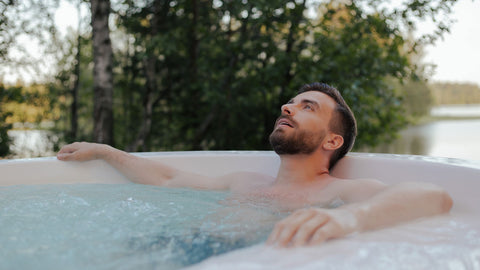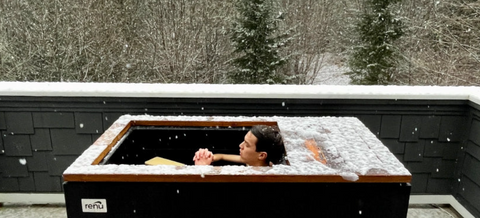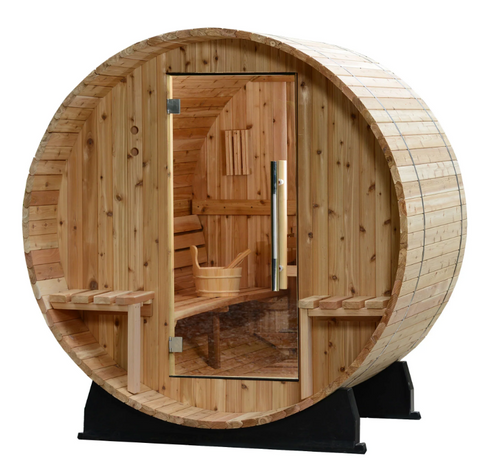More and more benefits of cold immersion therapy are being revealed with each study on this centuries-old practice. From mental health benefits to helping alleviate chronic and low-grade inflammation, professional athletes have been swearing by cold immersion therapy for decades.
Nowadays, those seeking every advantage possible for keeping the human body healthy are starting to understand the possible benefits of cold water therapy. To help you get the most out of your new home cold plunge routine, here are six simple tips for cold water immersion that are safe and beneficial.
1. Start Cool, Then Go Colder
Who doesn't want to possess the mental tenacity of Wim Hof when it comes to enduring extreme cold? Of course, this extreme level of performance isn't attainable right out of the gate for most people.
Rather than setting yourself up for discouragement with the difficulty of coping with cold water temperatures, start cool, and work up to even colder water.
2. 30 Days Of Cold Showers
In order to start small and build your resistance to the cold, taking an ice-cold shower is a great strategy to follow that doesn't require a significant investment of money or time.
This helps to provide insight into the physiological responses you'll experience and bolsters your ability to manage them.
Days 1-10
You can either begin or finish each day with a 60-second cold shower without taking any days off. Work to simply maintain proper breathing in this stage.
Days 11-20
Begin every day with a cold shower for three minutes straight. On days 14 and 18, give yourself a break. If you're struggling to last, try alternating between 30 seconds of fully-cold water and 30 seconds of slightly-warm water for five minutes or more.
Days 21-30
Finally, begin your days with a 5-minute cold shower, taking days 22 and 26 off. At this point, you should be ready for full immersion in cold water temperatures without it being too much of a shock.
3. Don't Skimp On Clean Tank Water
Who wants to deal with filtering hose water and adding chemical treatments to the water in a cold immersion tank? The water needs to be continually processed to ensure the healthiest overall experience. It also helps deliver more consistent and long-lasting performance from the internal components of your cold immersion tank.
Part of this process is aided by simply covering the tank at night. But having a tank with a built-in, chemical-free filtration system is ideal. This helps ensure always-clean and sanitized water that won't wear out your cold exposure tank prematurely.
4. Submerge Yourself Up To Your Neck
Once you've graduated from the cold shower phase, it's time to start taking full-fledged cold plunges. To achieve the full benefits of this simulated cold water swimming, try dunking all the way to your neck, which exposes your thyroid to help regulate your body temperature, making it easy to stay in for the full time.
You can also try dipping your face into the frigid waters off and on during your cold plunge to help keep the nervous system active and alert.
5. Don't Stay In Too Long
Once you've acclimated yourself to the feeling of when your body contacts cold water, the goal is a minimum of three minutes in cold plunge pools.
Three minutes is approximately the amount of time it takes for most of those starting out to begin shivering in cold water.
In water that's 45 to 55 degrees, you might be able to endure the cold for up to ten minutes safely. But typically, it takes about four to six weeks for the human body to reach this level of tolerance for exposure to cold water temperatures.
6. Focus On Proper Breathing
When first establishing your ice bath routine, it helps tremendously to calm the nervous system. This is one reason why cold immersion therapy demands a focus on proper breathing. The parasympathetic nervous system is triggered by cycling through deep, full inhales and exhales.
This system can also be activated by humming, which boosts nitric oxide levels that make cells more receptive to oxygen. Here are a few easy steps to follow each time you're preparing for the cold conditions.
- Start with a 2-3 minute routine of deep breathing through your nostrils to prepare for cold conditions. Simply focus on inhaling and exhaling, working to make each exhale a little longer than each inhale.
- Next, enter the tank water while holding your breath out on an exhale. Try your best to maintain steady breathing that's not too fast or labored.
- Finally, as you're soaking, work through 2-3 sets of ten breathing cycles of inhaling through the nostrils and humming on long exhales. On the 10th exhale of each set, try to hold in the air as long as safely possible.
Benefit From Cold Water Immersion Therapy At Home Any Time
The health benefits of exposure to cold temperatures are far more easy and cost-effective with a home cold plunge. When you're seeking a consistent, quality cold-water exposure experience, turn to RENU Therapy.
Each of our handmade in the USA cold-water exposure tanks is carefully crafted to ensure flawless performance day in and day out. Contact RENU today and start gaining cold water therapy benefits in no time!

















